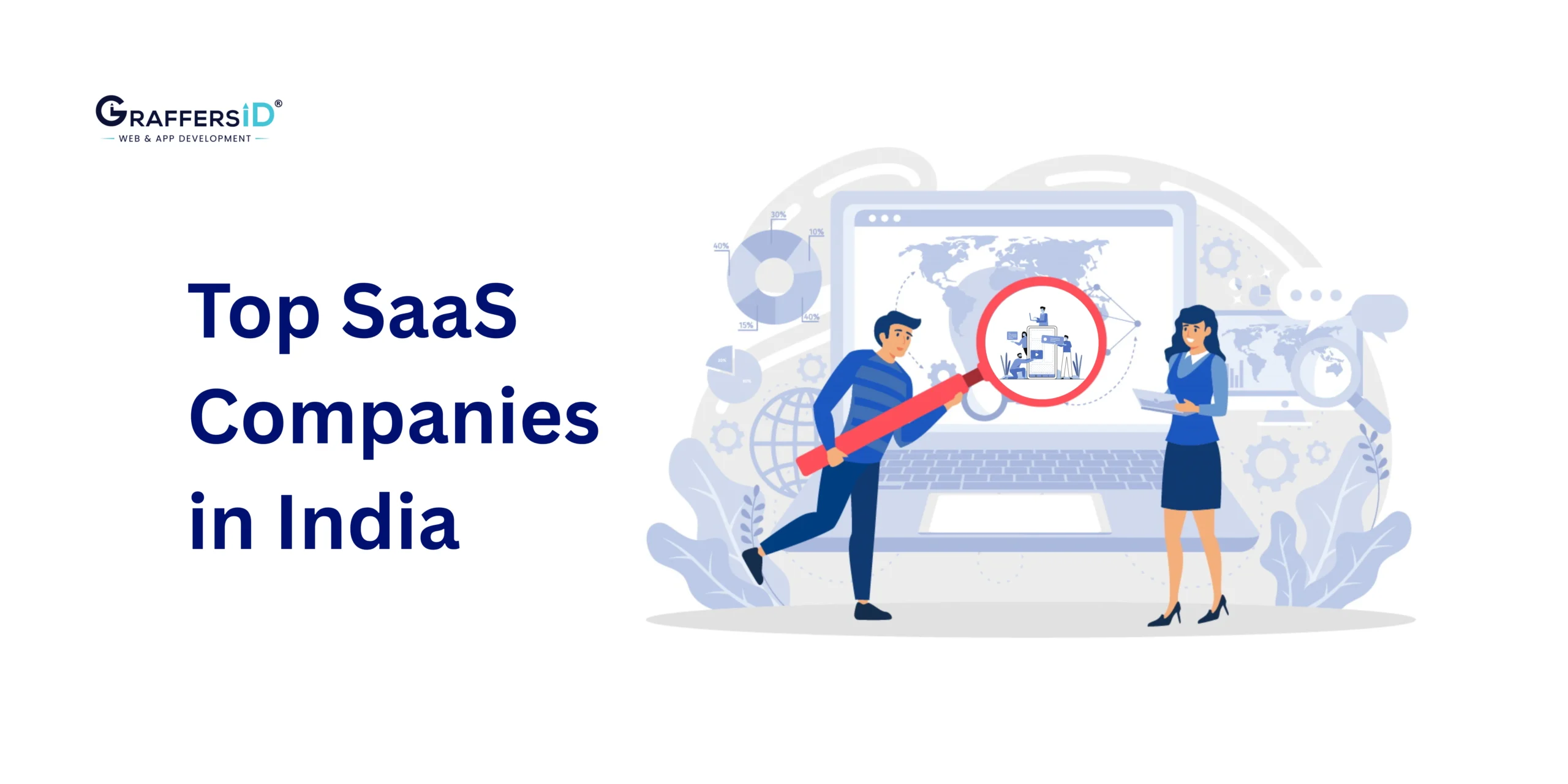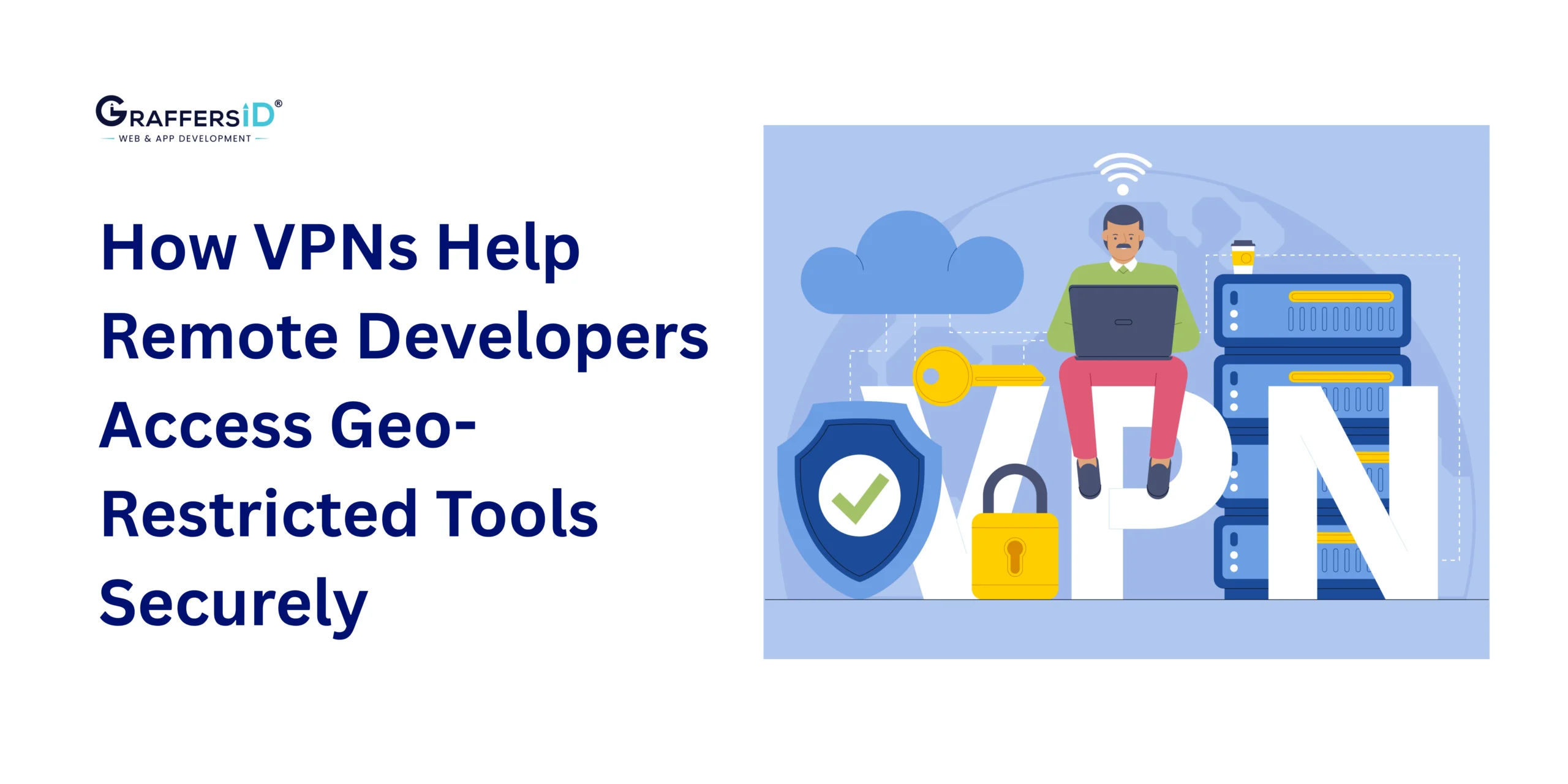In today’s ever-evolving digital landscape, the importance of IT outsourcing cannot be overstated. From cutting costs to accessing specialized talent, IT outsourcing has become a strategic imperative for businesses across various industries. But what exactly is IT outsourcing, and how you can build the best IT outsourcing company?
In a world where societal norms often dictate timelines for milestones like career progression, the notion of changing careers at 30 can seem daunting.
What is IT Outsourcing?
IT outsourcing refers to the practice of hiring external service providers to handle IT functions and tasks that could otherwise be performed in-house. These functions may include software development, infrastructure management, technical support, cybersecurity, and more. Essentially, IT outsourcing allows companies to delegate specific tasks or entire projects to third-party vendors, often located offshore, thereby freeing up internal resources to focus on core business activities.
Why is it Here?
The rise of IT outsourcing can be attributed to several factors. Firstly, globalization and advancements in communication technology have made it easier for businesses to collaborate with partners and service providers worldwide. This has opened up a vast pool of talent and resources that were previously inaccessible. Additionally, the growing complexity of IT systems and the rapid pace of technological innovation have led to increased demand for specialized skills, which may not be readily available in-house.
Moreover, cost reduction is another driving force behind the adoption of IT outsourcing. By outsourcing certain functions or projects, companies can lower operational expenses, mitigate risks, and achieve greater flexibility in scaling their IT operations. This is particularly beneficial for startups and small businesses with limited budgets and resources, allowing them to compete more effectively in the market.
IT outsourcing has emerged as a strategic solution for businesses seeking to optimize their IT capabilities, reduce costs, and stay competitive in today’s digital economy. As we delve deeper into this topic, we will explore the key steps and strategies for building the best IT outsourcing company in the USA, catering to the diverse needs of CEOs, CTOs, hiring managers, project managers, entrepreneurs, and startup founders alike.
Overview of IT Outsourcing:
IT outsourcing has a rich history dating back several decades, marked by significant advancements and transformations that have shaped the modern business landscape.
-
Origins and Evolution:
The concept of IT outsourcing first emerged in the 1960s with the advent of mainframe computers. During this time, large corporations began to outsource specific IT functions, such as data processing and payroll, to third-party service providers. However, it wasn’t until the 1980s and 1990s that IT outsourcing gained widespread popularity, fueled by the rapid expansion of the technology industry and the globalization of markets.
-
Pioneers and Key Players:
One of the early pioneers of IT outsourcing was Electronic Data Systems (EDS), founded by Ross Perot in 1962. EDS quickly became a leading provider of IT services, catering to clients across various industries. In the following years, other companies such as IBM, Accenture, and Infosys emerged as key players in the IT outsourcing market, offering a wide range of services to meet the growing demand for technology solutions.
-
Evolution and Versions:
Over time, IT outsourcing has undergone several iterations, each driven by technological advancements and changing market dynamics. In its early stages, outsourcing primarily involved basic IT functions such as data entry and maintenance. However, as technology progressed, so did the scope and complexity of outsourced services. The rise of the internet and cloud computing, in particular, revolutionized the outsourcing industry, enabling companies to access a global talent pool and leverage cutting-edge technologies remotely.
Today’s Scene:
In the present day, IT outsourcing has become an integral part of the business strategy for companies of all sizes and industries. From startups to Fortune 500 corporations, organizations are increasingly turning to outsourcing to streamline operations, drive innovation, and gain a competitive edge in the market. Additionally, advancements in areas such as artificial intelligence, machine learning, and cybersecurity have opened up new opportunities for outsourcing, further fueling its growth and relevance in today’s digital economy.
Drawbacks of IT Outsourcing
While IT outsourcing offers numerous benefits, it’s essential to acknowledge and address the potential challenges and drawbacks associated with this business model.
Here are some key considerations:
-
Communication Barriers:
One of the most significant challenges in IT outsourcing is communication barriers, especially when working with teams located in different time zones or regions. Differences in language, culture, and communication styles can lead to misunderstandings, delays, and inefficiencies in project execution.
-
Quality Control Issues:
Ensuring consistent quality standards across geographically dispersed teams can be a daunting task. Without proper oversight and quality control measures in place, there’s a risk of subpar deliverables, missed deadlines, and dissatisfied clients. Maintaining rigorous quality assurance processes is essential to mitigate this risk.
-
Data Security Concerns:
Entrusting sensitive data and intellectual property to third-party vendors can raise significant security concerns. Cybersecurity threats, data breaches, and compliance issues pose a considerable risk to businesses outsourcing their IT functions. It’s crucial to implement robust security measures, encryption protocols, and contractual safeguards to protect sensitive information.
-
Dependency on Vendor Reliability:
IT outsourcing involves reliance on external vendors for critical business functions, making businesses vulnerable to the performance and reliability of these vendors. If a vendor experiences disruptions, financial instability, or breaches of contract, it can have detrimental effects on the outsourcing relationship and the overall operations of the business.
-
Loss of Control and Flexibility:
Outsourcing certain IT functions may result in a loss of direct control and oversight over the development process, project management, and decision-making. Businesses may find it challenging to adapt to changing requirements, priorities, and market conditions when they lack full control over their IT operations. Striking the right balance between outsourcing and in-house capabilities is essential to maintain agility and flexibility.
-
Hidden Costs and Pricing Models:
While outsourcing can initially seem cost-effective, hidden costs and unpredictable pricing models can emerge over time. Additional fees for revisions, change requests, or unexpected scope creep can inflate project costs and strain budgetary constraints. It’s critical to negotiate transparent pricing structures and carefully evaluate the total cost of ownership before engaging in outsourcing arrangements.
-
Loss of Intellectual Capital:
Outsourcing certain IT functions may lead to a loss of internal knowledge, expertise, and institutional memory within the organization. Over-reliance on external vendors for critical tasks can diminish the organization’s ability to innovate, problem-solve, and develop proprietary solutions. Maintaining a balance between outsourcing and internal capabilities is essential to preserve intellectual capital and foster long-term organizational growth.
-
Cultural Misalignment:
Differences in organizational culture, work culture, and business practices between the client and the outsourcing vendor can create friction and impede collaboration. Mismatched expectations, communication styles, and decision-making processes may hinder the effectiveness of the outsourcing relationship. Building strong interpersonal relationships, fostering cultural awareness, and promoting cross-cultural collaboration are essential to overcome cultural barriers.
-
Legal and Regulatory Compliance:
Outsourcing IT functions may subject businesses to complex legal and regulatory requirements, particularly concerning data privacy, consumer protection, and intellectual property rights. Navigating international laws and regulations can be challenging, especially when outsourcing to offshore vendors. It’s imperative to conduct thorough due diligence, establish clear contractual agreements, and ensure compliance with relevant laws and regulations to mitigate legal risks.
-
Reputation and Brand Risks:
Poorly managed outsourcing relationships or service disruptions can damage the reputation and brand image of the business. Negative publicity, customer dissatisfaction, and service outages can erode trust and credibility in the marketplace. Prioritizing vendor selection, performance monitoring, and crisis management strategies is crucial to safeguard the reputation and brand integrity of the business.
While IT outsourcing offers numerous advantages in terms of cost savings, access to specialized expertise, and scalability, businesses need to navigate these potential challenges effectively. By proactively addressing communication barriers, ensuring quality control, implementing robust security measures, and maintaining strategic oversight, businesses can mitigate risks and maximize the benefits of IT outsourcing.
Key Features of an IT Outsourcing Company:
-
Expertise Across Technologies:
A standout feature of an IT outsourcing company is its breadth and depth of expertise across various technologies. Whether it’s software development, cloud computing, cybersecurity, or data analytics, the company should have proficient teams capable of handling diverse IT needs.
-
Flexible Engagement Models:
Another distinguishing factor is its ability to offer flexible engagement models tailored to the specific requirements of clients. This could include project-based outsourcing, dedicated team models, or managed services, allowing clients to choose the most suitable approach for their business.
-
Global Delivery Capabilities:
A key advantage is its global delivery capabilities, enabling the company to leverage talent from different parts of the world to provide round-the-clock support and faster project turnaround times. This ensures seamless operations and efficient service delivery irrespective of the client’s location.
-
Focus on Quality Assurance:
An emphasis on quality assurance sets apart a reliable IT outsourcing company. This involves rigorous testing processes, adherence to industry best practices, and continuous improvement initiatives to ensure that deliverables meet or exceed client expectations in terms of functionality, performance, and reliability.
-
Scalability and Agility:
The ability to scale resources up or down quickly in response to changing business needs is crucial. A standout IT outsourcing company should be able to accommodate fluctuations in workload, resource requirements, or project scope without compromising on quality or timelines.
-
Transparent Communication and Reporting:
Clear and transparent communication channels coupled with regular progress reporting are essential features. Clients should have visibility into project status, milestones, and performance metrics, fostering trust and collaboration between the outsourcing company and its clients.
-
Compliance and Security Measures:
With increasing concerns around data privacy and security, robust compliance frameworks and stringent security measures are imperative. An IT outsourcing company that prioritizes compliance with relevant regulations and adopts industry-standard security practices provides clients with peace of mind and mitigates risks associated with data breaches or regulatory non-compliance.
-
Client-Centric Approach:
Lastly, a client-centric approach distinguishes an exceptional IT outsourcing company. This involves understanding the unique needs and goals of each client and providing tailored solutions and proactive support to drive business success. Building long-term relationships based on trust, reliability, and mutual benefit is a hallmark of such companies.
How to Build the Best IT Outsourcing Company in the USA?
For entrepreneurs aspiring to establish the best IT outsourcing company in the USA, a blend of strategic planning, technological prowess, and exceptional service delivery is paramount. In this comprehensive guide, we delve into the essential steps and strategies to pave your path toward building an industry-leading IT outsourcing firm.
1. Define Your Niche:
Begin by identifying your specialization within the vast realm of IT outsourcing. Whether it’s software development, cybersecurity, cloud computing, or data analytics, pinpoint an area where you possess expertise and where there’s a demand in the market. Focusing on a niche allows you to differentiate your services and establish a strong foothold in the industry.
2. Craft a Compelling Business Plan:
A well-defined business plan serves as the foundation of your venture. Outline your objectives, target market, revenue projections, competitive analysis, and operational strategies. Consider factors such as scalability, resource allocation, and risk mitigation to ensure long-term sustainability and growth.
3. Build a Talented Team:
Surround yourself with skilled professionals who share your passion for technology and innovation. Recruit experts in software development, project management, quality assurance, and other relevant domains. Foster a culture of collaboration, continuous learning, and excellence to drive collective success.
4. Embrace Cutting-Edge Technologies:
Stay abreast of the latest technological trends and advancements shaping the IT landscape. Invest in state-of-the-art infrastructure, tools, and platforms that empower your team to deliver exceptional solutions efficiently. Whether it’s artificial intelligence, blockchain, or the Internet of Things, leverage emerging technologies to stay ahead of the curve and offer innovative services to your clients.
5. Prioritize Quality and Compliance:
Uphold rigorous standards of quality assurance and compliance to instill trust and credibility among your clients. Adhere to industry best practices, regulatory requirements, and international standards such as ISO 27001 for information security management. Implement robust quality control processes to ensure the reliability, security, and performance of your deliverables.
6. Forge Strategic Partnerships:
Collaborate with industry partners, technology vendors, and service providers to augment your capabilities and expand your offerings. Cultivate strategic alliances that complement your strengths and enable you to deliver end-to-end solutions to your clients. By forging symbiotic relationships, you can enhance your competitive advantage and unlock new growth opportunities.
7. Deliver Exceptional Customer Experience:
Place customer satisfaction at the forefront of your business strategy. Strive to understand your client’s unique challenges, objectives, and preferences, and tailor your solutions accordingly. Foster open communication, transparency, and responsiveness to cultivate strong relationships built on trust and mutual respect. Continuously solicit feedback and iterate on your services to exceed customer expectations and foster long-term loyalty.
8. Cultivate Thought Leadership:
Position your company as a thought leader and industry authority by sharing insights, expertise, and best practices through blogs, whitepapers, webinars, and speaking engagements. Demonstrate your thought leadership through participation in industry events, conferences, and forums, where you can network with peers, showcase your capabilities, and stay abreast of market trends.
9. Focus on Continuous Improvement:
Embrace a culture of continuous improvement and innovation to stay agile and adaptable in a rapidly evolving landscape. Encourage experimentation, creativity, and learning from both successes and failures. Invest in ongoing training and development programs to upskill your team and equip them with the knowledge and tools needed to excel in their roles.
10. Measure Performance and Adapt Strategically:
Establish key performance indicators (KPIs) and metrics to monitor the performance of your operations, projects, and client engagements. Leverage data analytics and business intelligence to derive actionable insights and inform strategic decision-making. Remain agile and flexible in response to changing market dynamics, client needs, and technological advancements, adapting your strategies and offerings accordingly.
Building the best IT outsourcing company in the USA requires a combination of vision, expertise, and relentless dedication to excellence. By adhering to these principles and embracing a customer-centric approach, you can create a company that not only delivers exceptional value to its clients but also sets the standard for innovation and excellence in the industry.
Emerging trends in The IT outsourcing Industry
As one of the leading players in the global IT outsourcing market, the United States continually witnesses the emergence of new trends that reshape the industry landscape. From advancements in technology to evolving client expectations, staying abreast of these trends is crucial for both outsourcing providers and businesses seeking to leverage outsourcing services effectively. Let’s delve into some of the most prominent emerging trends in the IT outsourcing industry in the USA:
-
Cloud Computing Dominance:
Cloud computing has transformed the way businesses manage their IT infrastructure, offering scalability, flexibility, and cost-efficiency. In the USA, IT outsourcing providers are increasingly focusing on cloud-based solutions to meet the growing demand from businesses looking to migrate their operations to the cloud. From infrastructure as a service (IaaS) to software as a service (SaaS), outsourcing firms are offering a wide range of cloud-based solutions tailored to the unique needs of their clients.
-
Rise of Artificial Intelligence and Automation:
With advancements in artificial intelligence (AI) and automation technologies, IT outsourcing providers are integrating these capabilities into their service offerings. AI-powered solutions enable businesses to streamline operations, enhance decision-making processes, and improve overall efficiency. In the USA, outsourcing firms are leveraging AI and automation to deliver predictive analytics, intelligent automation, and virtual assistants, thereby driving innovation and value for their clients.
-
Focus on Cybersecurity:
The increasing frequency and sophistication of cyber threats have elevated cybersecurity to the top of the agenda for businesses across all industries. In response, IT outsourcing providers in the USA are prioritizing cybersecurity services to help organizations safeguard their data, networks, and systems. From managed security services to penetration testing and incident response, outsourcing firms are enhancing their cybersecurity capabilities to address evolving threats effectively.
-
Growth of Nearshore and Onshore Outsourcing:
While offshore outsourcing remains popular for its cost-saving benefits, there is a growing trend towards nearshore and onshore outsourcing in the USA. Nearshore outsourcing, which involves partnering with service providers in neighboring countries, offers advantages such as proximity, cultural alignment, and timezone compatibility. Similarly, onshore outsourcing, which involves working with domestic providers, appeals to businesses seeking closer collaboration, regulatory compliance, and risk mitigation.
-
Focus on Customer Experience:
In today’s customer-centric business environment, delivering exceptional customer experiences is paramount for success. IT outsourcing providers in the USA are increasingly emphasizing the importance of customer experience by adopting a more consultative approach, understanding clients’ unique requirements, and providing personalized solutions. From dedicated account management to proactive communication and continuous improvement initiatives, outsourcing firms are prioritizing customer satisfaction as a key differentiator.
-
Agile and DevOps Practices:
Agile methodologies and DevOps practices have become standard in software development and IT operations, enabling organizations to deliver high-quality products and services at a rapid pace. IT outsourcing providers in the USA are embracing Agile and DevOps principles to drive collaboration, transparency, and innovation throughout the software development lifecycle. By adopting Agile methodologies such as Scrum and Kanban and implementing DevOps tools and processes, outsourcing firms are helping clients accelerate time-to-market and achieve greater agility in their operations.
-
Focus on Sustainability and Corporate Social Responsibility (CSR):
As businesses increasingly prioritize sustainability and corporate social responsibility (CSR), IT outsourcing providers in the USA are aligning their operations with environmentally friendly practices and ethical standards. From reducing carbon emissions and energy consumption to promoting diversity and inclusion in the workforce, outsourcing firms are integrating sustainability and CSR initiatives into their business strategies. By demonstrating a commitment to environmental and social responsibility, IT outsourcing providers can attract socially conscious clients and contribute to positive social impact.
Marketing strategies are most effective for promoting an IT outsourcing business
For IT outsourcing companies, navigating through the noise and effectively promoting their services to potential clients can be a daunting task. However, with the right marketing strategies in place, these businesses can not only increase their visibility but also attract high-quality leads and ultimately drive growth. In this blog, we’ll delve into some of the most effective marketing strategies tailored specifically for IT outsourcing businesses.
-
Define Your Unique Value Proposition:
Before diving into marketing tactics, it’s crucial to identify and articulate your unique value proposition (UVP). What sets your IT outsourcing business apart from the competition? Whether it’s expertise in a particular technology stack, a track record of successful project deliveries, or a specialized niche focus, clearly defining your UVP will serve as the foundation for all your marketing efforts.
-
Content Marketing:
Content marketing remains a cornerstone for promoting any business in the digital age, and IT outsourcing companies are no exception. By creating high-quality, informative content such as blog posts, whitepapers, case studies, and infographics, you can showcase your industry knowledge, thought leadership, and problem-solving capabilities. Share insights on emerging technologies, best practices in software development, or success stories from previous projects to establish credibility and attract potential clients.
-
Search Engine Optimization (SEO):
With the vast majority of consumers turning to search engines like Google to find solutions to their problems, optimizing your online presence for search engines is essential. Conduct keyword research to identify relevant search terms that potential clients might use when looking for IT outsourcing services. Optimize your website’s meta tags, headings, and content with these keywords to improve your organic search rankings. Additionally, consider creating targeted landing pages for specific services or industries to capture qualified leads.
-
Social Media Marketing:
Social media platforms offer a powerful avenue for engaging with your target audience and showcasing your IT outsourcing expertise. Create profiles on platforms such as LinkedIn, Twitter, and Facebook, and regularly share industry insights, company updates, and relevant content. Participate in relevant LinkedIn groups and Twitter chats to network with potential clients and establish relationships with industry professionals. Additionally, consider leveraging paid advertising options on social media to reach a broader audience and drive traffic to your website.
-
Email Marketing:
Email marketing remains one of the most effective channels for nurturing leads and staying top-of-mind with potential clients. Build an email list of prospects who have expressed interest in your services through website sign-ups, downloads, or inquiries. Segment your email list based on factors such as industry, company size, or stage in the buying cycle, and tailor your messaging accordingly. Send targeted email campaigns offering valuable resources, case studies, or promotional offers to nurture leads and encourage them to take the next step.
-
Thought Leadership Initiatives:
Positioning your IT outsourcing company as a thought leader in the industry can significantly enhance your credibility and attract prospective clients. Explore opportunities to speak at industry conferences, webinars, or networking events to share your expertise and insights. Publish guest articles on reputable industry websites or contribute to online forums and communities where your target audience congregates. By consistently demonstrating your industry knowledge and thought leadership, you’ll naturally attract clients who value your expertise.
-
Strategic Partnerships:
Collaborating with complementary businesses and strategic partners can broaden your reach and generate new business opportunities. Identify other companies in your ecosystem, such as software vendors, digital agencies, or industry associations, that cater to similar target markets. Explore opportunities for co-marketing initiatives, joint webinars, or referral partnerships that can mutually benefit both parties. By leveraging the networks and resources of your strategic partners, you can amplify your marketing efforts and reach new audiences.
Conclusion
In conclusion, building the best IT outsourcing company in the USA demands a strategic blend of specialization, talent acquisition, technological innovation, and unwavering commitment to customer satisfaction. By defining a niche, crafting a robust business plan, assembling a talented team, embracing cutting-edge technologies, and prioritizing quality and compliance, you can establish a strong foundation for success. Cultivating strategic partnerships, delivering exceptional customer experiences, fostering thought leadership, and embracing continuous improvement are essential ingredients for sustained growth and differentiation in a competitive landscape. Through relentless dedication to excellence and a customer-centric approach, aspiring entrepreneurs can realize their vision of creating a leading IT outsourcing firm that not only meets but exceeds the evolving needs and expectations of clients in the dynamic digital era.




